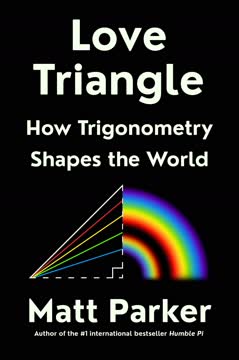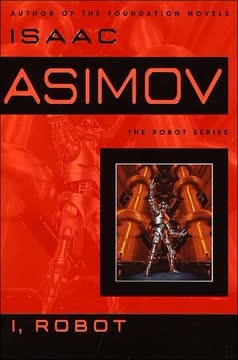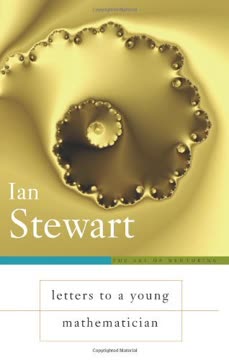Key Takeaways
1. Mathematics is Ubiquitous and Often Unseen
Without mathematics, today’s world would fall apart.
Hidden in Plain Sight. Mathematics is the silent architect of our modern world, underpinning technologies and systems we often take for granted. From the algorithms that power search engines to the equations that design aircraft, mathematics is the invisible force driving progress. Its importance is easily underestimated because it operates behind the scenes, embedded in the tools and technologies we use daily.
Examples of Math's Presence:
- Aerodynamics equations in aircraft design
- Trigonometry in navigation systems
- Statistics in medical drug development
- Orbital dynamics in satellite communications
The Computer Paradox. The rise of computers hasn't made mathematics obsolete; instead, it has amplified its importance. Computers are powerful tools, but they rely on mathematical algorithms to perform their tasks. The ubiquity of cheap, powerful computers has opened up new opportunities to apply mathematics to real-world issues, making it more essential than ever.
2. Unreasonable Effectiveness: Math's Unexpected Applications
What gives mathematics its power is the combination of these two ways of thinking. Each complements the other.
Beyond Reasonable Uses. The true power of mathematics lies in its "unreasonable effectiveness," its ability to solve problems in areas far removed from its original context. This occurs when mathematical concepts developed for purely theoretical reasons find unexpected applications in seemingly unrelated fields.
Examples of Unreasonable Effectiveness:
- Topology, initially developed to solve bridge puzzles, now aids in kidney transplants.
- Space-filling curves, studied for their abstract properties, help plan delivery routes.
- Abstract concepts from algebraic geometry secure internet communications.
The Unity and Diversity of Mathematics. Mathematics is a boundless, creative system of ideas and methods. Its power stems from its unity, the interconnectedness of its various branches, and its diversity, the wide range of tools and techniques it offers. This combination allows mathematics to address a vast array of problems, both expected and unexpected.
3. Democracy and Math: A Surprising Connection
As journalism professor Wayne Dawkins delicately put it, this amounts to politicians picking their voters instead of voters picking their politicians.
Rules and Consequences. Democratic politics, though seemingly driven by human relationships and rhetoric, operates according to rules. Mathematics, with its emphasis on deducing consequences from rules, can be applied to analyze the structure of these rules and their potential for manipulation.
Gerrymandering Tactics:
- Packing: Concentrating opposition voters into a few districts to minimize their influence.
- Cracking: Spreading opposition voters across many districts to dilute their voting power.
Fairness and Compromise. Mathematical analysis can reveal methods for rigging votes, but it can also shine a spotlight on such practices, providing clear evidence of subversion. It also demonstrates that any democratic system must involve elements of compromise, as the list of desirable attributes is often self-contradictory.
4. The Traveling Salesman Problem: More Than Just a Route
The main point always consists of visiting as many places as possible, without having to touch the same place twice.
Practical Origins, Deep Waters. The Traveling Salesman Problem (TSP), originating from a manual for traveling salesmen, is a prime example of combinatorial optimization. It highlights the challenge of finding the best solution from a vast number of possibilities.
Real-World Applications:
- Optimizing delivery routes for parcels and supermarket orders
- Minimizing needle movement in computer-controlled embroidery machines
- Scheduling observations for astronomical telescopes
- DNA sequencing
Computational Complexity. The TSP has led to deep theoretical questions, including the P ≠ NP? problem, a Millennium Prize Problem. This underscores the difficulty of finding efficient algorithms for certain types of problems, even when solutions can be easily verified.
5. Topology: From Abstract Theory to Real-World Solutions
In addition to that branch of geometry which is concerned with magnitudes, there is another branch, which Leibniz first mentioned, calling it the geometry of position…
Rubber Sheet Geometry. Topology, often called "rubber sheet geometry," studies properties of shapes that remain unchanged under continuous deformations. This abstract field, once considered purely theoretical, now has practical applications in diverse areas.
Applications of Topology:
- Kidney transplants: Graph theory, a branch of topology, helps match donors to recipients.
- Sensor networks: Persistent homology, a topological tool, ensures full coverage in security systems.
- Computer animation: Shape space, an infinite-dimensional space of curves, smooths animation sequences.
The Königsberg Bridge Problem. Euler's solution to the Königsberg bridge problem, a seemingly trivial puzzle, laid the foundation for graph theory and topology. This demonstrates how seemingly abstract mathematical inquiries can lead to unexpected real-world applications.
6. Number Theory: From Pure Math to Cybersecurity
No one has yet discovered any warlike purpose to be served by the theory of numbers or relativity, and it seems unlikely that anyone will do so for many years.
Fermat's Little Theorem. Fermat's Little Theorem, a seemingly abstract result in number theory, forms the basis of modern cryptography. This highlights the unpredictable nature of mathematical applications, where pure research can unexpectedly become essential for real-world security.
RSA Cryptosystem:
- Relies on the difficulty of factoring large numbers into primes.
- Uses modular arithmetic and Euler's totient function to create a trapdoor function.
- Secures online transactions and protects sensitive information.
The Importance of Abstraction. The story of number theory and cryptography underscores the value of abstract mathematical research. By pursuing curiosity-driven inquiries, mathematicians create tools and concepts that can later be applied to solve unforeseen problems.
7. Complex Numbers: Unveiling the Invisible World
The Divine Spirit found a sublime outlet in that wonder of analysis, that portent of the ideal world, that amphibian between being and not-being, which we call the imaginary root of negative unity.
Beyond the Real. Complex numbers, initially viewed as abstract and lacking physical interpretation, have become essential tools in various fields. Their ability to simplify calculations and reveal hidden structures makes them indispensable in areas like electrical engineering and quantum mechanics.
Applications of Complex Numbers:
- Electrical engineering: Representing alternating currents and simplifying circuit analysis.
- Quantum mechanics: Describing the wave function of quantum systems.
- Signal processing: Analyzing and manipulating signals in various applications.
The Number Plane. Complex numbers provide a natural way to represent points in a plane, linking algebra and geometry. This connection allows for elegant solutions to geometric problems and provides a framework for understanding transformations in two dimensions.
8. Quaternions: A Mathematical Tool for 3D Animation
Ocean waves crashing nicely against your boat in ASC: Black Flag? Math.
From Theory to Application. Quaternions, invented by William Rowan Hamilton as a generalization of complex numbers, provide a powerful tool for representing rotations in three-dimensional space. Though initially overlooked, they have found widespread use in computer graphics and animation.
Advantages of Quaternions:
- Avoid gimbal lock, a problem that can occur with Euler angles.
- Allow for smooth interpolation between rotations.
- Provide a compact and efficient representation of rotations.
Computer Graphics and Animation. Quaternions are used extensively in computer games, movies, and other applications that require realistic three-dimensional animation. They enable smooth and accurate rotations of objects, characters, and cameras, enhancing the visual experience.
9. Chaos Theory: Finding Order in Apparent Randomness
This problem is solvable by finitely many trials. Rules which would push the number of trials below the number of permutations of the given points, are not known.
Deterministic Chaos. Chaos theory reveals that even systems governed by deterministic rules can exhibit unpredictable behavior. This arises from the extreme sensitivity to initial conditions, where tiny differences can lead to vastly different outcomes.
Applications of Chaos Theory:
- Quality control in spring manufacturing: Detecting irregularities in wire properties.
- Weather forecasting: Understanding the limitations of long-term predictions.
- Financial markets: Analyzing and predicting market fluctuations.
Reconstructing Attractors. Techniques like sliding-window reconstruction allow us to identify hidden patterns in chaotic systems by analyzing time series data. This enables us to make short-term predictions and control the behavior of these systems.
10. The Power of Mathematical Modeling: Climate Change and Beyond
The miracle of the appropriateness of the language of mathematics for the formulation of the laws of physics is a wonderful gift which we neither understand nor deserve.
Understanding Complex Systems. Mathematical modeling provides a powerful framework for understanding and predicting the behavior of complex systems, such as the Earth's climate. By creating simplified representations of these systems, we can gain insights into their dynamics and make informed decisions.
Climate Change Modeling:
- Predicting global temperature increases
- Estimating sea-level rise
- Analyzing the impact of human activities on the environment
The Ising Model and Melt Ponds. The Ising model, originally developed to study magnetism, has found unexpected applications in climate science. It helps us understand the formation and growth of melt ponds on Arctic sea ice, a key factor in the planet's albedo and the rate of ice melt.
11. The Interplay of Pure and Applied Mathematics
The miracle is that despite its multifarious motivations, mathematics is all one thing.
From Abstract to Concrete. The history of mathematics is filled with examples of abstract concepts finding unexpected applications in the real world. This underscores the importance of both pure and applied research, as each informs and enriches the other.
Examples of Interplay:
- Number theory, initially a purely theoretical pursuit, now underpins modern cryptography.
- Topology, once considered abstract geometry, now has applications in kidney transplants and sensor networks.
- Functional analysis, a highly abstract area of mathematics, is essential for medical scanners and image compression.
The Value of Curiosity. The most significant advances often come from pursuing curiosity-driven inquiries, even when there are no immediate practical applications in sight. By fostering a culture of exploration and discovery, we can unlock new mathematical tools and insights that will shape the future.
Last updated:
Review Summary
What's the Use? receives mixed reviews, with an average rating of 3.58/5. Many praise Stewart's ability to explain complex math applications in everyday life, covering topics like gerrymandering, medical technology, and climate change. Readers appreciate the humor and historical context. However, some find it too technical or dense for the average reader. Critics note that Stewart sometimes dismisses opposing viewpoints and fails to fully explore math's role in daily decision-making. Overall, it's recommended for those interested in math's practical applications, but may be challenging for non-mathematicians.
Similar Books
Download PDF
Download EPUB
.epub digital book format is ideal for reading ebooks on phones, tablets, and e-readers.











